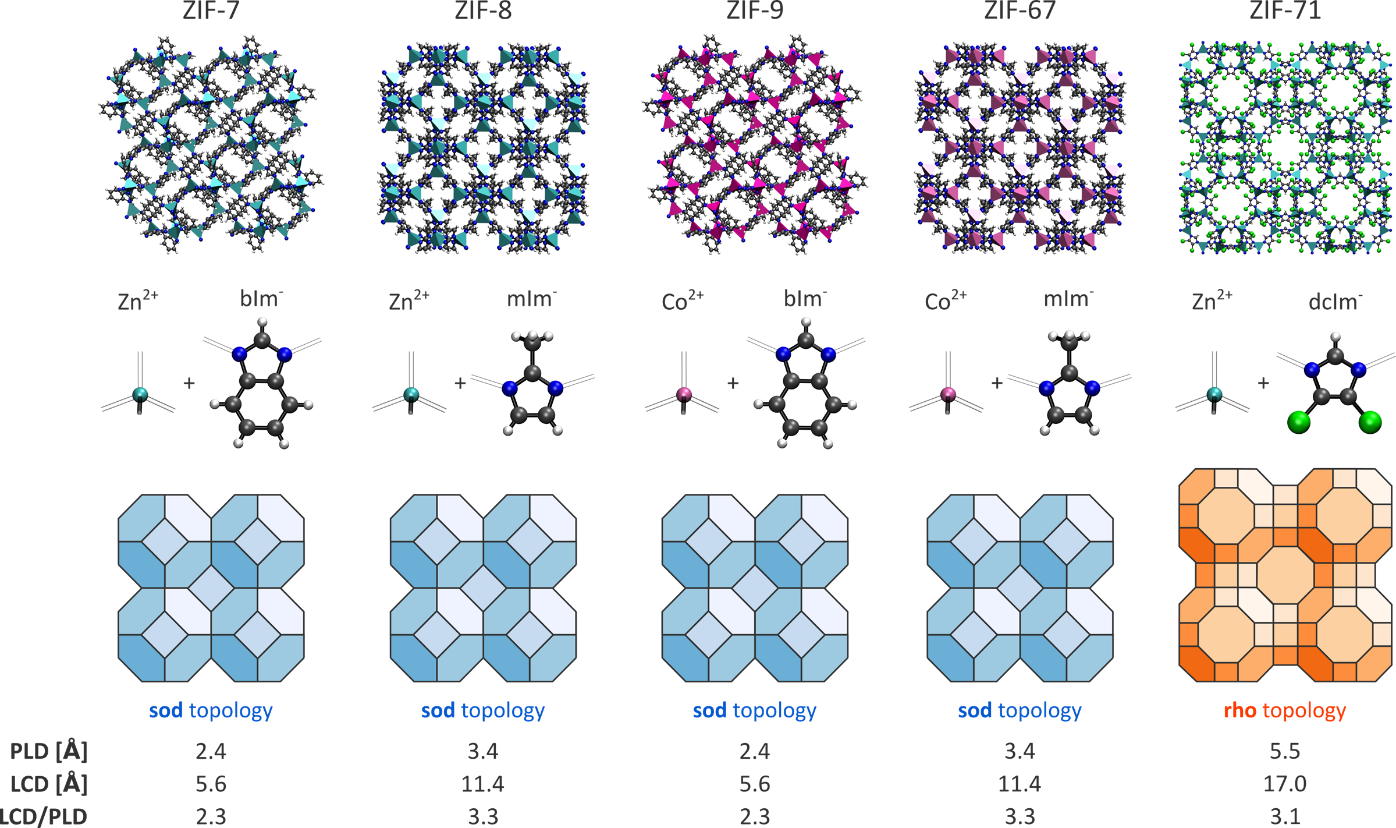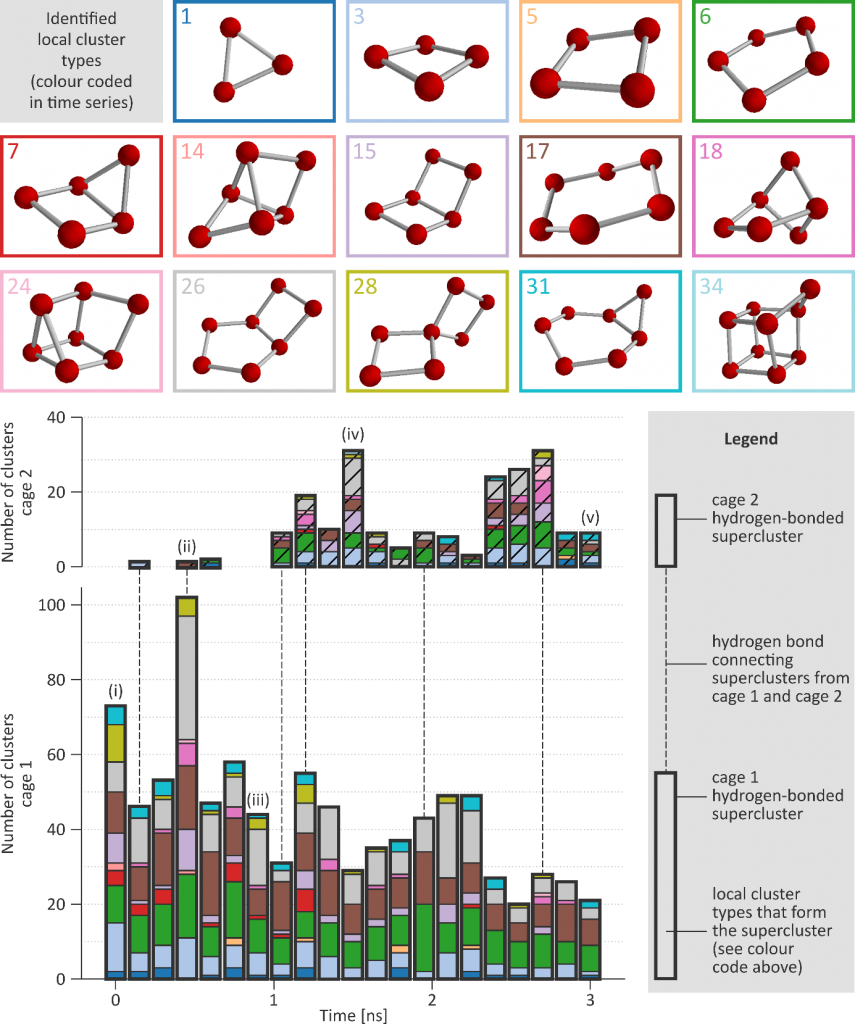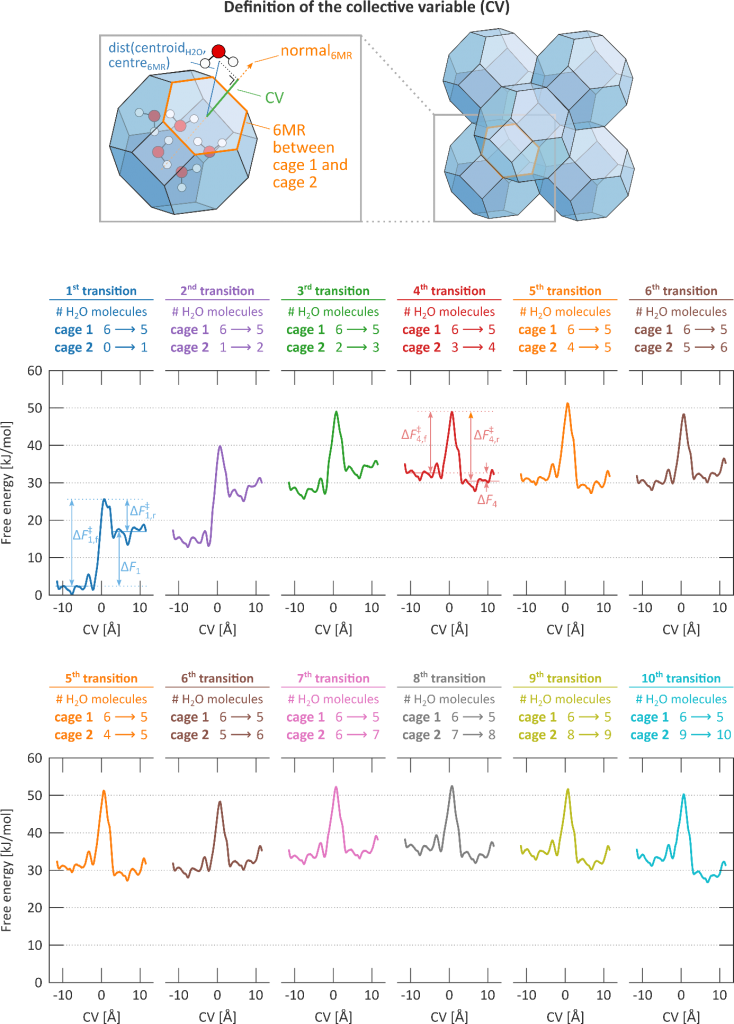Designing the shock absorbers of tomorrow: Understanding the intrusion and structure of confined water in nanoporous ZIFs
Designing the shock absorbers of tomorrow: Understanding the intrusion and structure of confined water in nanoporous ZIFs
Promotor(en): V. Van Speybroeck, S.M.J. Rogge /25306 / Model and software developmentBackground and problem
The absorption of excess energy during mechanical impacts plays a crucial role in modern society, from injury prevention and safety measures in industrials settings to cushioning systems that increase user comfort. To design an efficient shock absorbing material, it should both exhibit a high specific energy absorption and be recoverable to afford protection from multiple impacts. This effectively rules out current state-of-the-art materials that rely, for instance, on extensive but irreversible plastic deformation. The focus to find new shock absorption devices has therefore shifted towards forcefully intruding water in hydrophobic nanoporous materials [1]. In this proven energy absorption process, the energy of the mechanical impact is partially absorbed by the material when water is forced inside its hydrophobic nanopores, as this is energetically highly unfavourable.
In collaboration with experimental partners from the University of Oxford, we recently extended our modelling toolbox to investigate the forced intrusion of water in zeolitic imidazolate frameworks (ZIFs), a type of nanoporous metal-organic frameworks. ZIFs are a versatile class of materials that can be considered as an assembly of strongly bound and interconnected nanocages, as shown in Figure 1. In our work, recently published in Nature Materials, we demonstrated that the forced intrusion of water in hydrophobic ZIFs satisfies all the criteria to obtain excellent shock absorbers [2]. Even more, these materials were found to become stronger and absorb even more mechanical energy for harder mechanical impacts, distinguishing them from the current state-of-the-art and making them highly interesting to design the next-generation shock absorption materials. This surprising phenomenon stems from their typical nanocage structure and the characteristic clustering of water molecules confined inside these cages. Given the versatility in possible ZIF structures [3], however, it remains yet unclear how to fully exploit these design possibilities and find the best ZIF absorption material.

Goal
The goal of this thesis is to establish design principles to engineer ZIF materials for shock absorption, by systematically investigating several topologies and building blocks such as those shown in Figure 1 and obtaining insight into which factors play a dominant role in their shock absorption behaviour. This goal consists of two subtasks: (i) a complete structural characterization of water confined within ZIFs and (ii) an accurate determination of the ZIFs’ energy absorption capacity by quantifying the free energy barriers for water intrusion. As a proof of concept, Figure 2 shows a cluster analysis of confined water inside the nanocages of the topical ZIF-8. From this analysis, one can deduce the critical size and structure of the water clusters, which in turn determine the energy absorption efficiency of the material. Similarly, Figure 3 directly shows the energy barriers associated with the water intrusion phenomenon for ZIF-8 using enhanced molecular dynamics (MD) simulations

To obtain molecular-level insight into these phenomena, both regular and enhanced MD simulations will be performed at a force field level, describing the interatomic interactions by means of an effective potential that is fitted to ab initio data obtained by solving the Schrödinger equation. In the MD simulations, the atomic nuclei are evolved throughout time by integrating Hamilton’s equations of motion. From the MD data, the structural organization of the confined water molecules can be determined at the realistic operating conditions. In ZIF-8, for instance, water is known to fill the cages sequentially by means of the formation of water clusters, as indicated schematically in Figure 2. The filling of a next cage is substantially facilitated by the interaction with water clusters that are already present [2, 4]. Following this computational approach, it will be possible to elucidate the underlying principles determining the structural organization of water in ZIFs and to provide design principles on how ZIF materials can be tuned to optimize their performance as shock absorbers.

The student will be actively coached to make him/her acquainted with the advanced simulations techniques early in the thesis year, and to transfer necessary programming skills needed to perform the research.
- Study programmeMaster of Science in Engineering Physics [EMPHYS], Master of Science in Physics and Astronomy [CMFYST]KeywordsNanoporous materials, Molecular simulation, confined water, hydrogen bonding, shock absorption, zeolitic imidazolate frameworksReferences
[1] G. Fraux, F.-X. Coudert, A. Boutin and A. Fuchs, “Forced intrusion of water and aqueous solutions in microporous materials: From fundamental thermodynamics to energy storage devices,” Chem. Soc. Rev., vol. 46, pp. 7421-7437, 2017.
[2] Y. Sun, S. M. J. Rogge, A. Lamaire, S. Vandenbrande, J. Wieme, C. R. Siviour, V. Van Speybroeck and J.-C. Tan, “High-rate nanofluidic energy absorption in porous zeolitic frameworks,” Nat. Mater., 2021. DOI: .
[3] A. Phan, C. J. Doonan, F. J. Uribe-Romo, C. B. Knobler, M. O'Keeffe and O. M. Yaghi, “Synthesis, structure, and carbon dioxide capture properties of zeolitic imidazolate frameworks,” Acc. Chem. Res., vol. 43, pp. 58-67, 2010.
[4] H. Zhang and R. Q. Snurr, “Computational study of water adsorption in hydrophobic metal-organic framework ZIF-8: Adsorption mechanism and acceleration of the simulations,” J. Phys. Chem. C, vol. 121, pp. 24000-24010, 2017.
